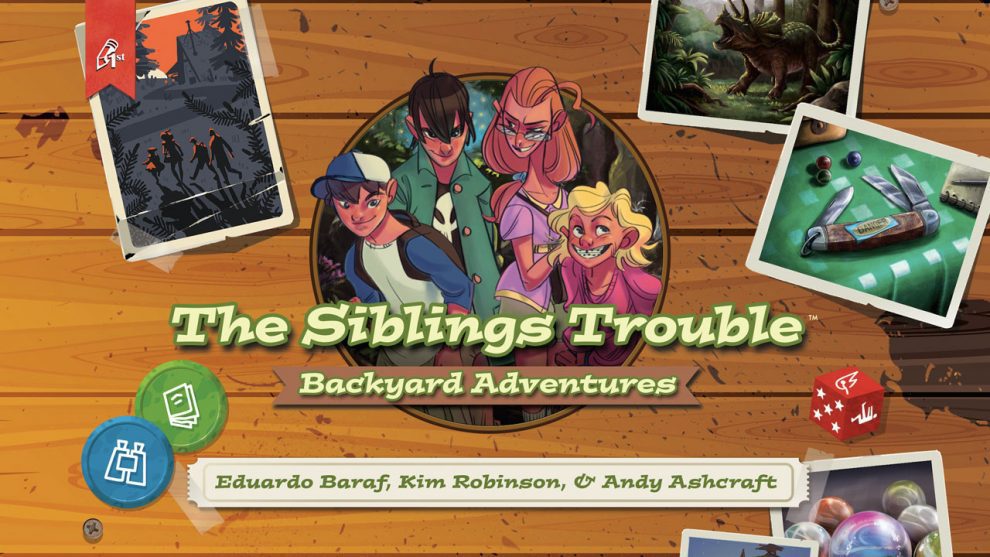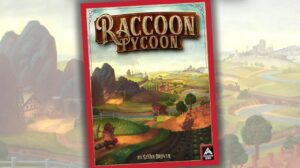- Designers: Andy Ashcraft, Eduardo Baraf, Kim Robinson
- Artists: Adam Dix, Kellan Jett, Jessica Robinson, Mackenzie Schubert
- Release Date: 2016
- Player count: 2-4
- Age range: 8+
- Time range: 30 minutes
- Mechanism(s): Acting, Co-operative Play, Dice Rolling, Role Playing, Storytelling
Overview of The Siblings Trouble
Today we’re going to be taking a look at The Siblings Trouble, a Kickstarter game created by Andy Ashcraft, Eduardo Baraf, Kim Robinson. The Siblings Trouble was successfully funded on May 13, 2015. Originally estimated for delivery in May, 2016 Eduardo and team far exceeded expectations with a February 18th delivery.
I almost didn’t back this game because of the story-telling aspect of it. The Siblings Trouble is heavily story driven, and encourages players to act out portions of the game. That’s not really my sort of thing, but I knew my 4 children would love it. And that’s what really made me pull the trigger on this game.
There was a lot of buzz around this game during the campaign due to it’s unique blend of gameplay and storytelling. I’m not going to be covering the gameplay in this article, but instead will only focus on the packaging, and components.
Let’s take a look.
The Exterior of The Siblings Trouble
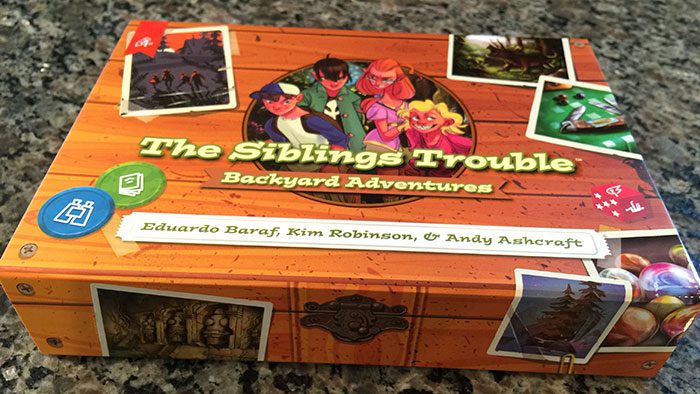
The exterior of the The Siblings Trouble has a nice matte finish with a number of places which have glossy coating. The art on the outside of the box looks just like the sort of treasure boxes kids make for themselves. Covered in stickers, random screws and tape holding it together. This would have been the type of box I would have died for as a kid.

The box is 5.5in x 7.75in x 1.75in (about the size of a trade paperback) and has a magnetic clasp on the front which is a really nice touch. Makes it really easy to open up, and reinforces the treasure box feel of the game. Unfortunately mine was slightly damaged in the mail and I was forced to tape up both corners on the right side. Not a huge deal.
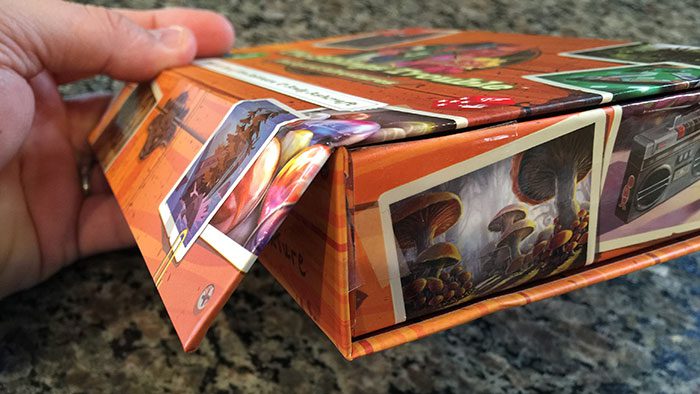
The Interior of The Siblings Trouble
As you open the lid you’re treated with a riot of color and iconography showcasing the great art, character design, and layout of the box.


The rim of the box even displays the names of the 4 characters in the game, just as if they claimed this box for their own; one of my favorite touches.
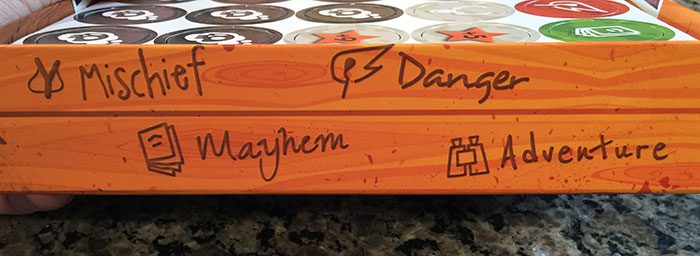
The Components of The Siblings Trouble
The Siblings Trouble includes two sheets of cardboard tokens (for a total of 30 tokens), with each token measuring a little more than an inch across…but these aren’t your ordinary cardboard. These appear to be black core cardboard tokens. Extremely thick and durable. I’ve never seen anything like it.
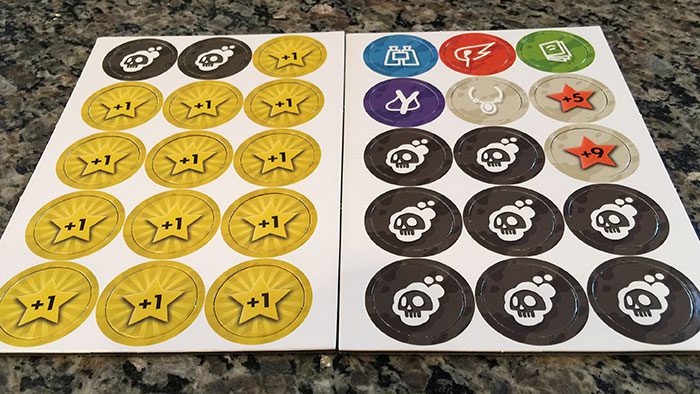
What a happy looking pile of tokens. Just waiting to be used!
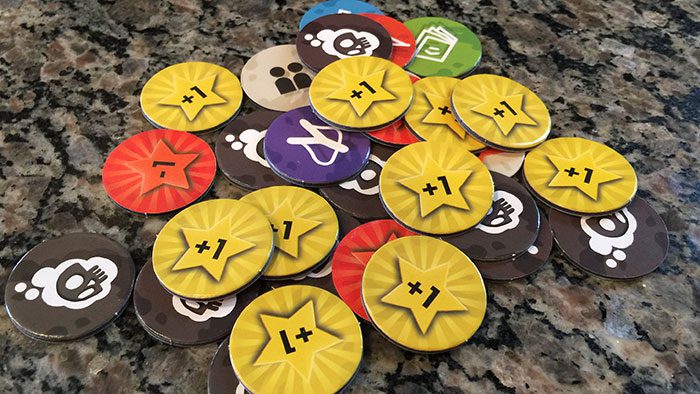
Look how thick these are, and the black core center is really striking. You can tell that Eduardo and crew really wanted this game to last.
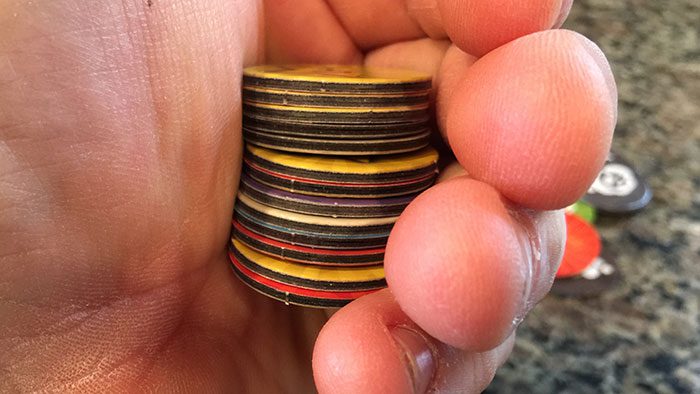
After punching the tokens out, there’s a perfectly designed slot to hold the tokens. Two thick decks of cards, and 6 custom dice (more on these later) also fit in quite perfectly. Each component slot features a deep recess which is perfectly suited to slide a finger into to pull out the cards, or the dice, or the tokens. The insert is extremely well designed.

Easily the most striking feature of the inside of the box are the dice. These are 6 wildly colored 16mm custom 6 sided dice. The dice are chunky and dense with deep embossing for each icon

There are a total of 157 cards in the box (that’s a LOT of cards) split into 6 main categories: character cards (4 with 4 for alternate genders, a nice touch), Treasure (and Epic Treasure) cards (34), Location cards (52), Path cards (30), Big Secret cards (12), Journey Home cards (12), and 4 player reference cards. Don’t worry though, for any game, you’ll only be using 13 cards. With that ratio of available to used cards there should be a metric ton of replayability!

You might think that with this many cards they would skimp on the art. For the Siblings Trouble you’d be absolutely wrong. The art is gorgeous with full color illustrations, and full-bleed printing.
Here’s some examples of the path cards, Home card, and Big Secret cards.
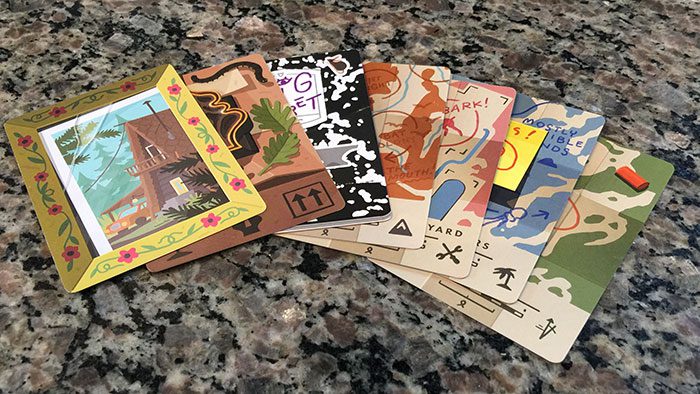
Each character: Mischief, Mayhem, Danger, and Adventure have both boy and girl illustrations (I’m only showing a single illustration here). This wasn’t even necessary because there are 2 boys and 2 girl main characters. But the team really went the extra mile to make sure that if you wanted Adventure to be a girl, you’re covered!
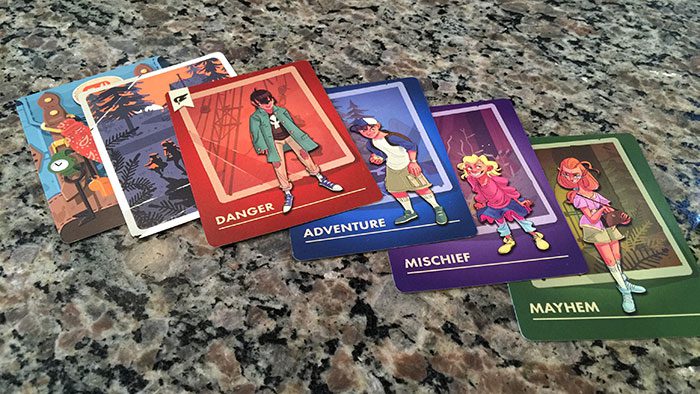
These are some examples of Treasure cards. The illustrations here are just beautiful. Not “fine art”, but “fine” art. The colors are vivid and really help to illustrate the things kids consider “treasures”. Having 4 kids myself I see these sorts of things all the time in my kids pockets.
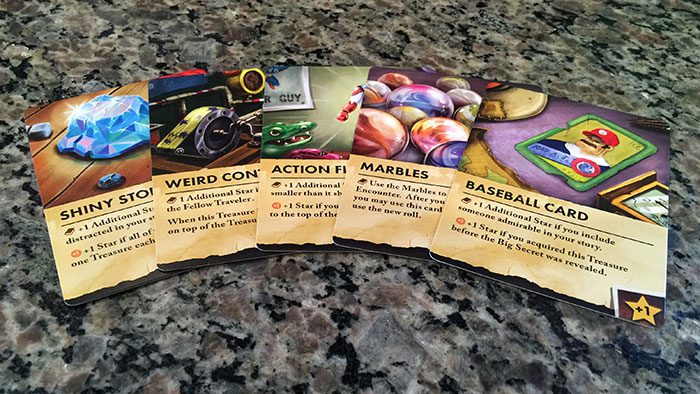
The Rulebook of The Siblings Trouble
There are 3 included booklets. One is a single page thank you letter from the designers; a nice personal touch.
One is a 4 page booklet titled Storytelling 101; a guide to acting out the parts of your characters. That’s also a nice touch because if you’re like me, that’s not my preferred gaming style.
Finally the Rulebook proper, a 16 page booklet with full color glossy print on nice thick paper.

The Rulebook has a nice 2 page spread in the very front which covers setup. It does a good job of reducing down the complexity to just the things you need to get started. Well done. Each component is clearly labeled which makes referencing back to the front page a nice option if you’re wondering what a certain component is.
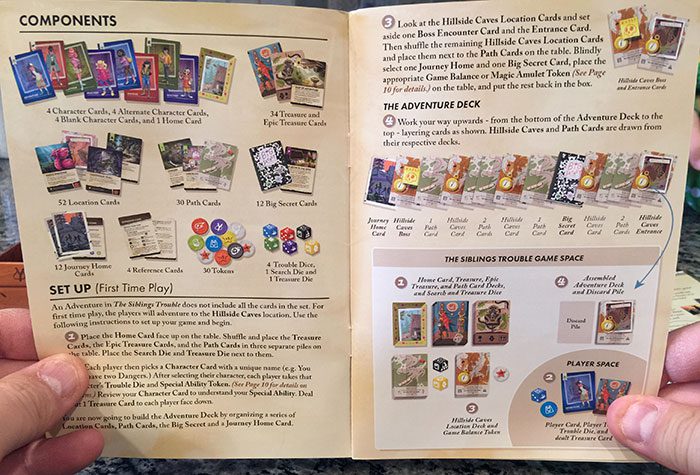
In three separate locations, the designers provided “Anatomy of a XYZ card”. This is a fairly common occurrence, but they did it really well.

Finally, there’s a full 4 page “mini-adventure” which walks you through a sample game to give you a feel for how it runs. That’s a great idea, and it looks like it was done quite well.

What I Dislike About The Siblings Trouble
There’s only a few noticeable issues with the game.
- My copy was damanged when it arrived. It was in the box pretty tightly, I’m guessing the team made a point of designing the game so that it would exactly fit into a USPS small flate rate box. They’ll know for next time.
- A common problem with games that provide sprues (the cardboard that holds tokens before they’re punched), is that when you get rid of them, the components slide around. This also occurs for The Siblings Trouble. It’s not terrible, really only the cards, but still something to mention. Store it flat and you probably won’t have that trouble.
- If you’re the sort of person who sleeves your cards, you’re going to be out of luck. The cards fit into their depression perfectly and there is zero room for that. I personally don’t care because I don’t sleeve, but some people do.
Final Thoughts on The Siblings Trouble
The Siblings Trouble production value is quite high as you can tell from the pictures. The team showered lots of love and care on this game and it shows. While I can’t speak for the gameplay yet, I look forward to sharing this with my family.


